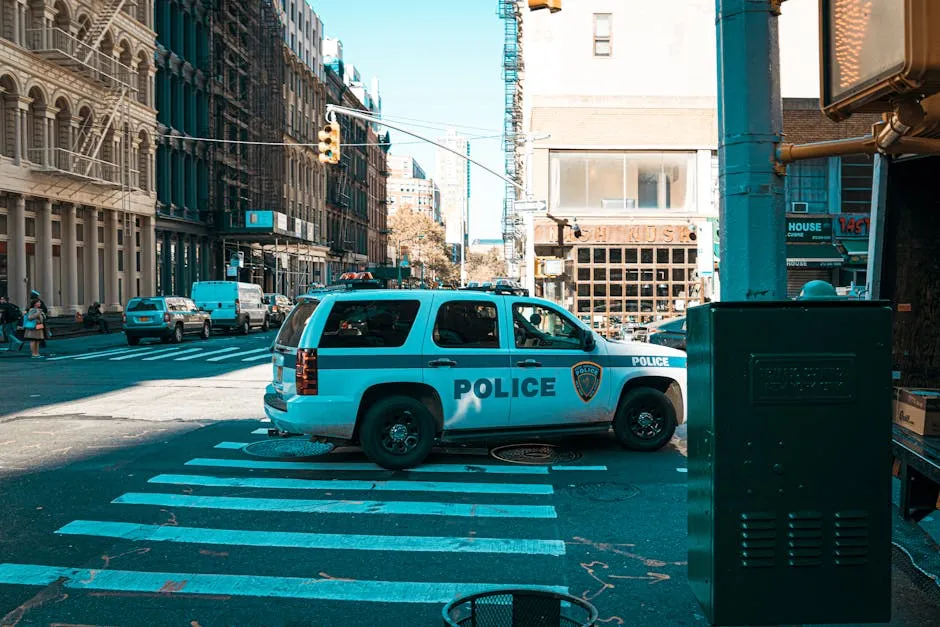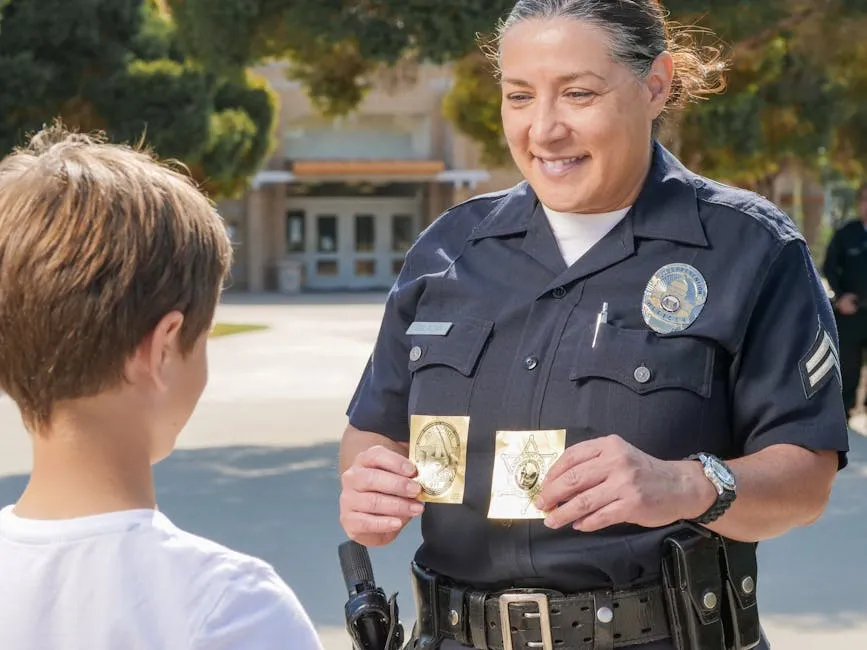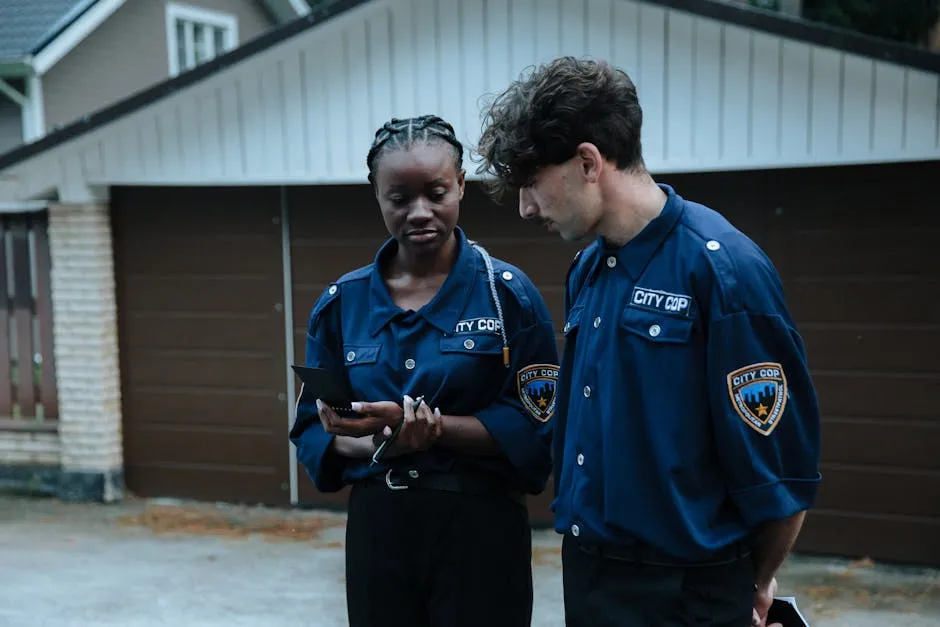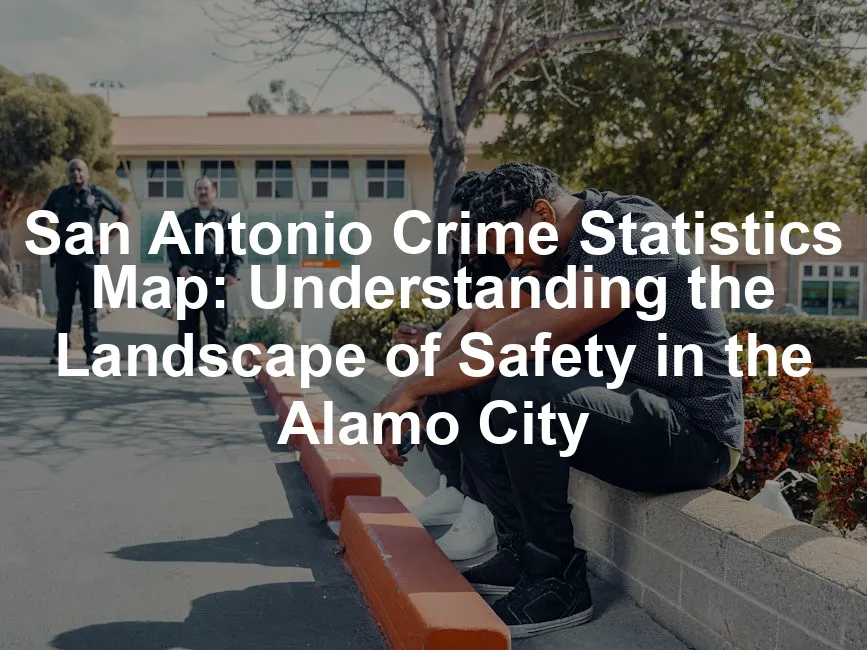Introduction
In a city as vibrant and bustling as San Antonio, the question of safety often looms large. With its rich history, cultural landmarks, and a community that is ever-growing, understanding the crime landscape becomes essential for residents and visitors alike. Enter the San Antonio crime statistics map: a powerful tool that decodes the complexities of local crime data, helping you navigate this beautiful city with confidence.
Understanding the crime landscape in San Antonio is essential for residents and visitors alike. San Antonio crime statistics provide valuable insights into safety.
Imagine this: you’re strolling along the River Walk, admiring the sights, and you can’t shake the nagging thought about safety. Is that corner safe? What about that neighborhood over there? Fear not! The crime statistics map is here to save the day. Whether you’re considering a move, planning a visit, or just curious about your neighborhood’s safety, we’ve got you covered.
This map allows you to visualize crime data in real-time. It helps you identify trends and specific areas that might require a bit more caution. Understanding these statistics can provide peace of mind and empower you to make informed decisions.

But wait, safety doesn’t just stop at knowing the crime rates! Why not take a proactive step in ensuring your security with a Home Security Camera System? Because who doesn’t want to keep an eye on their castle while sipping margaritas on the patio? You’ll be able to monitor your home and get alerts for any suspicious movements. It’s like having a digital watchdog, minus the slobber!
Let’s jump into the numbers and uncover what they really mean for you! With the right insights, you can feel secure exploring San Antonio’s hidden gems or enjoying its vibrant nightlife without a worry in the world. Safety doesn’t have to be a mystery, and with the crime statistics map, it’s easier than ever to navigate your way through this incredible city.
Summary
The San Antonio crime statistics map is more than just a visual representation; it’s a detailed analysis of crime trends, neighborhood safety, and police transparency. This article will explore the following key points:
- Current Crime Rates: Discover the latest statistics on total, violent, and property crime in San Antonio, providing context to the numbers.
- Neighborhood Breakdown: Understand which areas of San Antonio are more prone to crime and which neighborhoods boast lower crime rates, helping you make informed decisions about where to live or visit.
- Visual Tools: Learn how to use the crime statistics map effectively to analyze crime patterns and alerts.
- Year-over-Year Trends: Examine how crime rates have changed over the years, reflecting the city’s safety improvements or challenges.
- Community Resources: Access resources for public safety contacts and community engagement to stay informed and proactive about your safety.
By the end of this article, you will be equipped with the knowledge to navigate San Antonio’s crime landscape confidently and safely.

Crime Overview
Current Crime Rates
San Antonio’s crime rates paint a rather vivid picture. The total crime rate stands at a staggering 5,951 incidents per 100,000 residents. This rate is 156% higher than the national average. In fact, it’s a noticeable leap above the Texas average of 2,732.
Now, let’s break it down a bit more. Violent crime rates are equally alarming, reaching 883 per 100,000 residents. This is 139% higher than the national average. Here’s how the violent crime statistics stack up:
- Murder: 15.7 incidents per 100,000 (higher than the national average of 6.3)
- Assault: 644.8 incidents per 100,000 (significantly above the 268.2 national average)
- Robbery: 116 incidents per 100,000 (outpacing the national average of 66.1)
- Rape: 106.1 incidents per 100,000 (far exceeding the national average of 40.0)
Property crime rates follow suit, with 5,069 incidents per 100,000 residents, a whopping 159% higher than the national average. Let’s look at this breakdown:
- Burglary: 637.1 incidents per 100,000
- Theft: 3,588 incidents per 100,000
- Vehicle Theft: 843.6 incidents per 100,000
These numbers reveal a city grappling with significant safety challenges. However, understanding these statistics is the first step towards addressing them.

And speaking of addressing safety challenges, have you thought about carrying a Personal Safety Alarm? It’s like having a secret weapon in your pocket. If you ever feel uneasy, just pull the pin, and you’ll create a ruckus loud enough to wake the neighbors and scare off any unwanted guests. Plus, it fits perfectly in your purse or backpack!
Year-Over-Year Trends
Let’s turn our gaze to the trends over the past five years. San Antonio has seen a notable uptick in crime. In fact, total crime has increased by 21.8% compared to the previous year. Specifically, violent crime jumped by 18.9% and property crime surged by 22.3%.
Several factors contribute to these trends. Economic conditions, such as rising poverty rates at 17.6%, play a significant role. Coupled with income inequality, these elements can create an environment ripe for crime. Law enforcement efforts are also pivotal. The San Antonio Police Department has ramped up community policing initiatives, aiming to build trust and prevent crime before it starts.

Crime Statistics by Neighborhood
Looking at crime statistics by neighborhood reveals a mixed bag. Some areas are notably safer, while others are high-risk zones.
High Crime Areas:
- Downtown: A bustling hub with a nightlife that brings both visitors and crime, it has higher rates of theft and assaults.
- Eastside: Known for elevated violent crime, particularly in the Arena District, this area demands caution.
- West End: This neighborhood faces challenges with both property and violent crimes.
Safer Neighborhoods:
- Alamo Heights: An upscale area known for its excellent schools and community spirit.
- Stone Oak: A family-friendly locale with low crime rates, perfect for those seeking peace of mind.
- Shavano Park: This affluent neighborhood is known for its beautiful homes and tight-knit community.
Visualizing this data through a crime map can greatly enhance understanding. It color-codes regions based on crime levels, making it easier for residents and visitors to gauge safety at a glance.
In summary, the crime landscape in San Antonio is complex. While some areas struggle with high crime rates, others remain safe havens. Understanding these patterns is essential for making informed decisions, whether you’re a resident or just passing through.

Understanding the Crime Statistics Map
How to Access and Use the Map
Accessing the San Antonio crime statistics map is as easy as pie! Start by visiting the official San Antonio Police Department website. Once there, look for the “Crime Map” link, usually found under the Public Safety section. Click it, and voilà, you’re in!
Now, let’s talk features. The map allows you to search for crime data by specific addresses or neighborhoods. You can filter crime types, like violent crimes or property crimes, making it easier to see what’s happening in your area. Want to know about that suspicious activity down the block? Just click on the icons to get detailed reports for each incident. You can even customize your map to highlight only the crimes that concern you. Pretty nifty, right?

Furthermore, users have the option to view results in different formats: as a map, in a data grid, or through analytic graphs. This flexibility helps you understand crime patterns and trends at a glance. Plus, you can sign up for daily, weekly, or monthly updates. Staying informed has never been easier!
Analyzing Crime Patterns
Once you’re familiar with the map, it’s time to read the data like a pro! Interpreting the crime statistics is crucial. Look for patterns in crime rates; are certain areas more prone to specific crimes? For instance, high-density neighborhoods may see more thefts, while quieter areas could have fewer incidents overall.
Understanding location is vital. Some neighborhoods may experience spikes in crime during certain times of the year. Context also matters. If an area is undergoing economic changes, it might influence crime rates. Always keep these factors in mind when analyzing the data.
Density plays a significant role too. Areas with a lot of foot traffic, like downtown, typically report higher crime rates. However, that doesn’t mean they’re unsafe; it just reflects the volume of people present. So, when looking at the map, consider the bigger picture. A few incidents in a neighborhood shouldn’t overshadow the overall safety of the community.

Sign Up for Alerts
Want to be the first to know about crime in your neighborhood? Sign up for alerts! Users can easily subscribe to receive notifications regarding local crimes. This proactive approach keeps you informed and aware of any potential safety concerns.
Signing up is simple. Just navigate to the alerts section on the crime map page and enter your email address. Choose your preferred frequency for updates, whether daily, weekly, or monthly. You’ll receive valuable information that can help you stay safe and make informed decisions about your surroundings.
Community engagement is crucial for safety. By staying informed, you not only protect yourself but also contribute to a safer environment for everyone. When residents are aware of crime patterns, they can work together to address concerns and promote neighborhood watch programs. So, what are you waiting for? Sign up today and become an active participant in your community’s safety!

Community Resources and Safety Initiatives
Public Safety Contacts
When it comes to safety in San Antonio, knowing whom to call is key. Local law enforcement and community safety organizations play a vital role. For emergencies, dial 911. For non-emergencies, the San Antonio Police Department (SAPD) can be reached at (210) 207-7273. They’re on the front lines, ready to respond to your calls.
Additionally, community safety organizations offer incredible support. The University of Texas at San Antonio Police Department is another excellent resource. You can contact them at (210) 458-4242 or via email at UTSAPolice@utsa.edu. Their commitment to safety extends beyond campus, helping to foster a secure environment for everyone.
Community policing initiatives are a game-changer! These programs build relationships between officers and residents, enhancing trust and communication. Officers engage with the community through events, educational workshops, and social media. This proactive approach allows residents to feel more comfortable reporting crimes and suspicious activities. It’s like having a friendly neighbor who just happens to be a police officer!

Crime Prevention Strategies
Ready to enhance your safety? Here are some effective strategies residents can adopt. Start by getting to know your neighbors. A friendly chat can lead to a strong neighborhood watch program. These groups are instrumental in reducing crime, as they create a sense of accountability and vigilance.
Consider installing security cameras around your home. Not only do they act as a deterrent, but they also provide valuable evidence if something does happen. Additionally, ensure your doors and windows are locked, even when you’re home. It’s a simple step that can significantly reduce the risk of burglary.
Participating in community initiatives is crucial. Events like safety fairs and neighborhood clean-ups foster a sense of belonging. They also promote awareness about local crime trends. Organizations like the San Antonio Crime Stoppers encourage community members to report tips anonymously. By sharing information, you can help keep your area safe.

And speaking of safety, you might want to consider carrying Pepper Spray. It’s a small but mighty tool that can give you a fighting chance in a pinch. Just remember, it’s not for use on your annoying neighbor—only in self-defense!
Lastly, don’t forget digital safety! With more people online than ever, understanding cybersecurity is vital. Protect your personal information and be cautious about sharing your location on social media. This simple awareness can prevent unwanted attention and potential threats.
In summary, safety in San Antonio is a shared responsibility. By utilizing public safety contacts, engaging in community policing, and adopting crime prevention strategies, residents can actively contribute to a safer environment for all. So, roll up your sleeves, get involved, and let’s make San Antonio a safer place together!

Conclusion
Understanding San Antonio’s crime statistics map is crucial for residents and visitors alike. While the data may seem overwhelming at first glance, it provides valuable insights into the safety of neighborhoods and overall crime trends. This powerful tool not only helps you navigate the city with confidence but also empowers you to make informed decisions about where to live, work, and explore in the Alamo City.
The crime statistics map reveals patterns that can directly influence your daily life. By staying informed about crime rates in different areas, you can identify safe neighborhoods for your family or pinpoint which parts of town are best to avoid when exploring the nightlife. Remember, knowledge is power, and being proactive about your safety can lead to a far more enjoyable experience in San Antonio.
While no city is without its challenges, San Antonio is home to many safe and vibrant communities. By utilizing the crime statistics map, you can become an active participant in your safety and that of your community. It is essential to engage with local resources and participate in neighborhood watch programs, as these initiatives can significantly contribute to crime prevention.
So, whether you’re a long-time resident or a first-time visitor, take a moment to familiarize yourself with the crime statistics map. It’s more than just numbers; it’s about understanding the landscape of safety in San Antonio. With the right information at your fingertips, you can enjoy all that this fantastic city has to offer without the shadow of safety concerns hanging overhead.
FAQs
What is the current crime rate in San Antonio?
The current crime rate in San Antonio is 5,951 crimes per 100,000 people. This figure is 49% higher than the Texas average of 2,732 and 75% higher than the national average of 2,324. Violent crimes account for 883 per 100,000 people, with the murder rate at 15.7 per 100,000.
How can I access the San Antonio crime statistics map?
Accessing the San Antonio crime statistics map is straightforward! Simply visit the [San Antonio Police Department’s official website](https://www.utsa.edu/publicsafety/community-resources/crime-map.html) and look for the Crime Map link under the Public Safety section. Here, you can search specific addresses or neighborhoods to view crime data.
Are there neighborhoods in San Antonio that are particularly safe?
Yes, some neighborhoods are known for their safety, including Alamo Heights, Stone Oak, and Shavano Park. These areas boast low crime rates and strong community ties, making them ideal for families and individuals alike.
What should I do if I witness a crime in my area?
If you witness a crime, it’s essential to report it immediately. Call 911 for emergencies or reach out to the non-emergency line at (210) 207-7273 to report suspicious activity. Engaging with local law enforcement helps ensure a safer community.
How often is the crime data updated?
Crime data in San Antonio is updated regularly, typically on a monthly basis. Staying informed about these updates is vital for understanding local safety trends and making educated decisions regarding your safety and community involvement.
Please let us know what you think about our content by leaving a comment down below!
Thank you for reading till here 🙂
All images from Pexels




